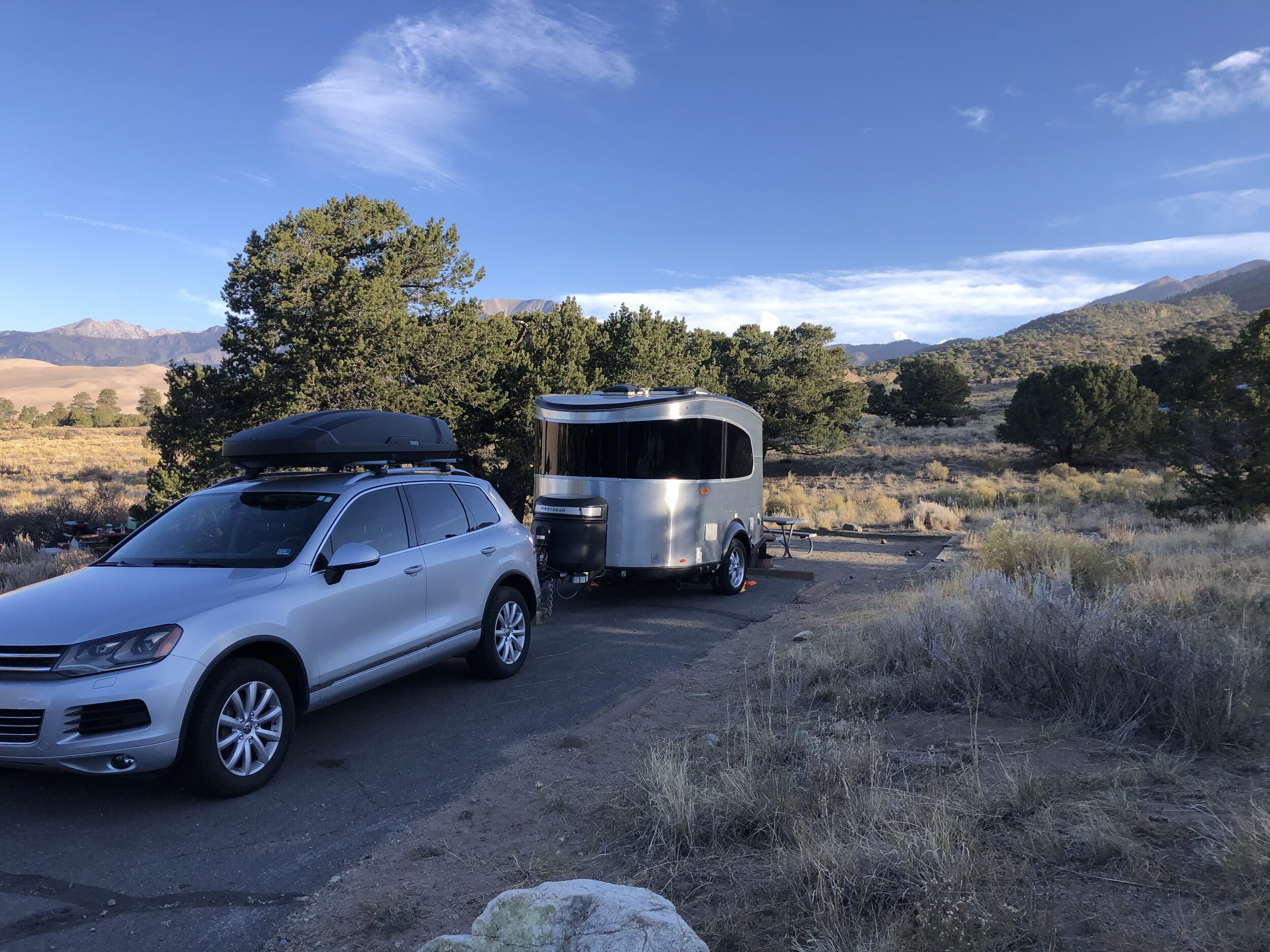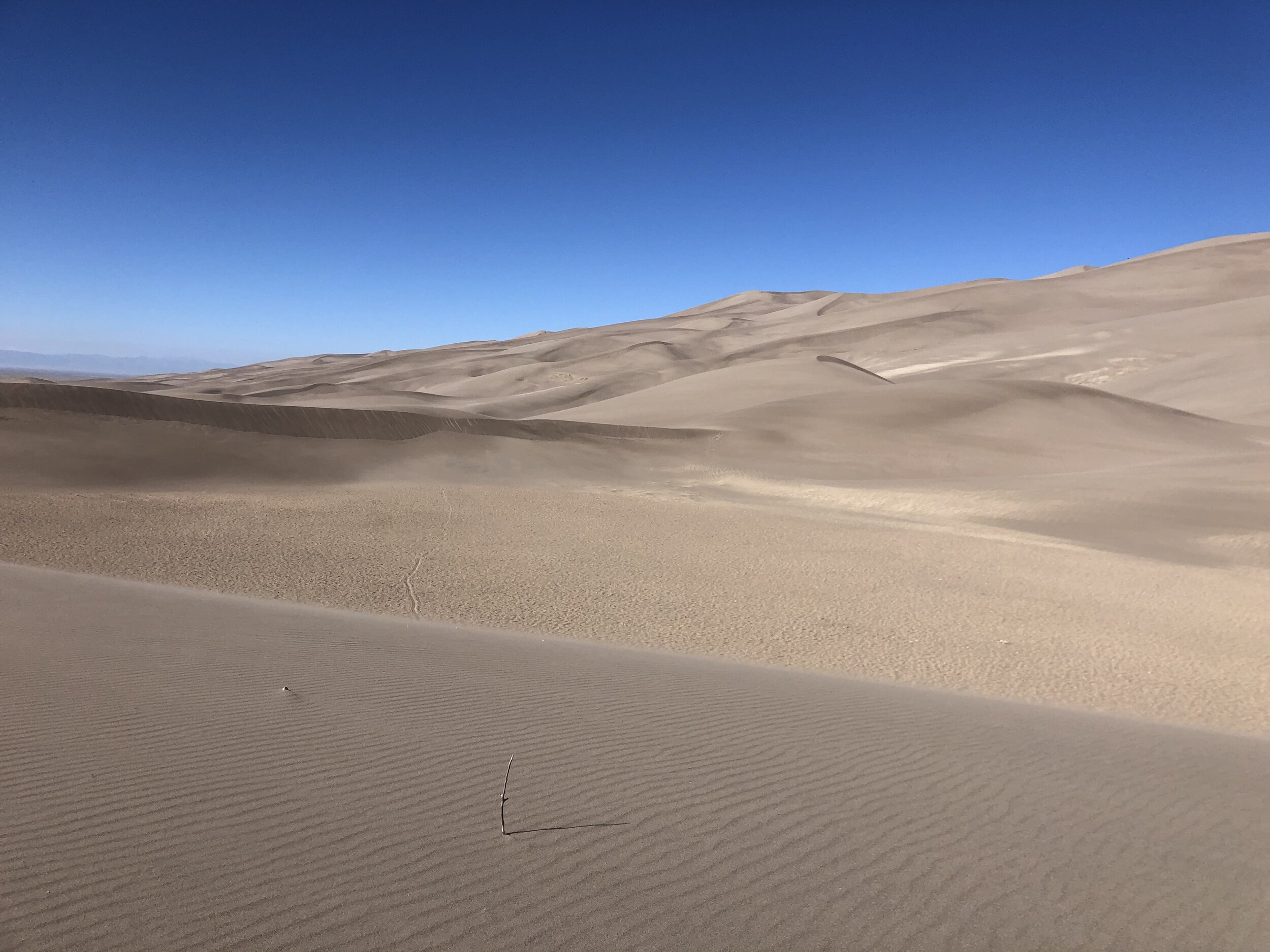#53: Great Sand Dunes & Mesa Verde National Parks
Great Sand Dunes National Park
From Colorado Springs, Great Sand Dunes National Park is about a 3.5-hour drive. I was glad to be heading south because the weather was turning - it was snowing with freezing temperatures when I hit the road.
I reserved a two-night camping reservation at Pinon Flats, the campground within the park. I was surprised to get a reservation (mostly because it was for Friday and Saturday night), but I don’t ask questions when I get lucky.
Maybe I’m spoiled, but in viewing these dunes, it was a grim comparison to the dunes I saw in New Mexico at White Sands National Park. Those dunes were just so incredibly white, which made them unique. I think what was interesting about these dunes in Colorado was that they had white snowcap mountains in their background. And, they were massive. Beach dunes are not as enormous and vast.
The park is small, and the campground was easy to locate. And it was tough to beat the view:
Our first activity on the agenda was, of course, the dunes. Because (sarcasm here) Addie and I are always so lucky, we picked the windiest day to visit sand. This is how it went.
It. Was. So. Windy.
The photos without Addie and me in them are way more appealing. The dunes were beautiful - especially with the bluest of skies as the backdrop.
I don’t love sand. The dunes are pretty to look at, but I don’t need to walk in them - especially on a windy day like this one was. Addie and I quickly B lined for the “forest” side of the park for a hike. We were much happier. And, I should note, dogs are allowed on the dunes and some trails.
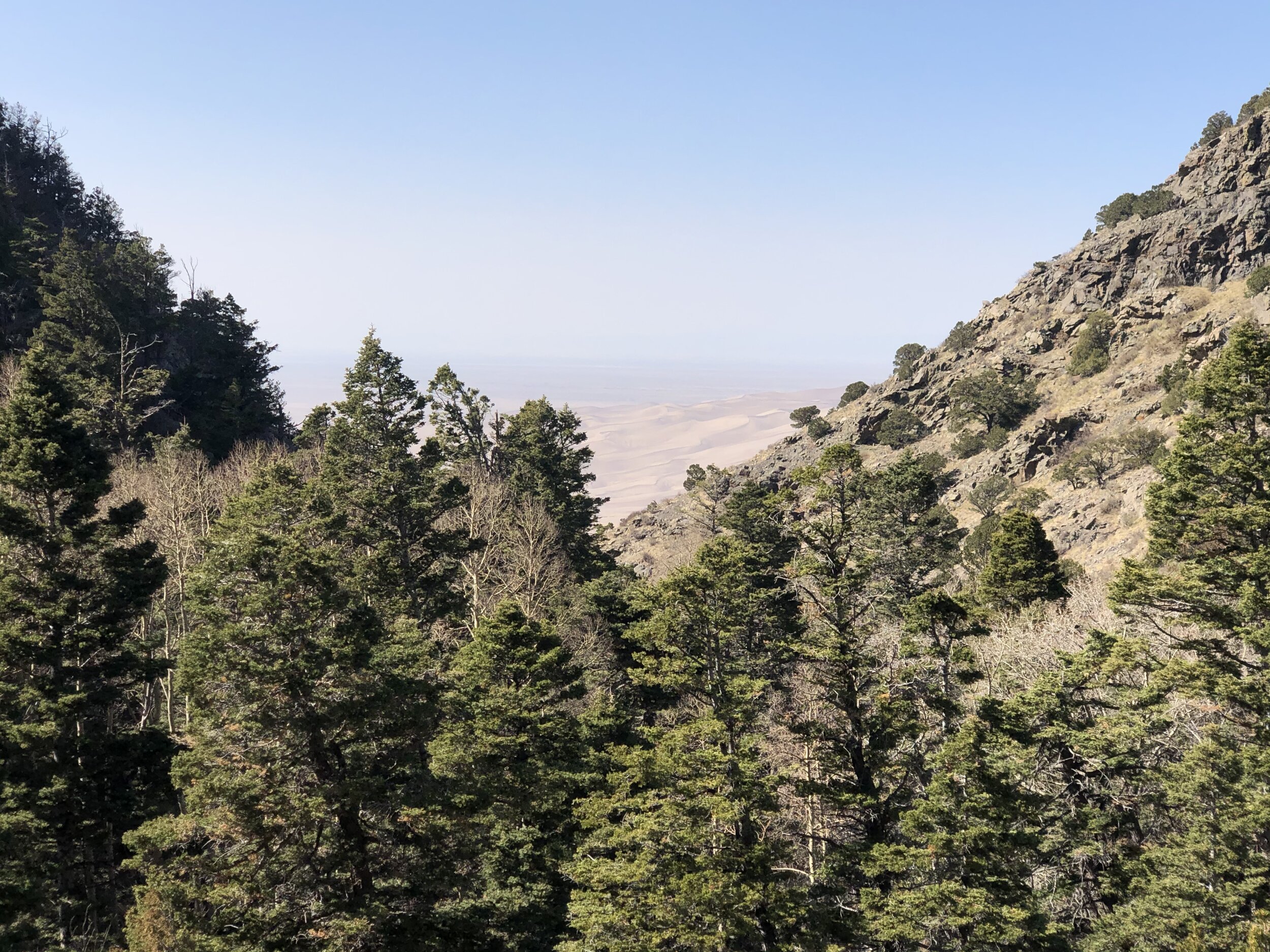


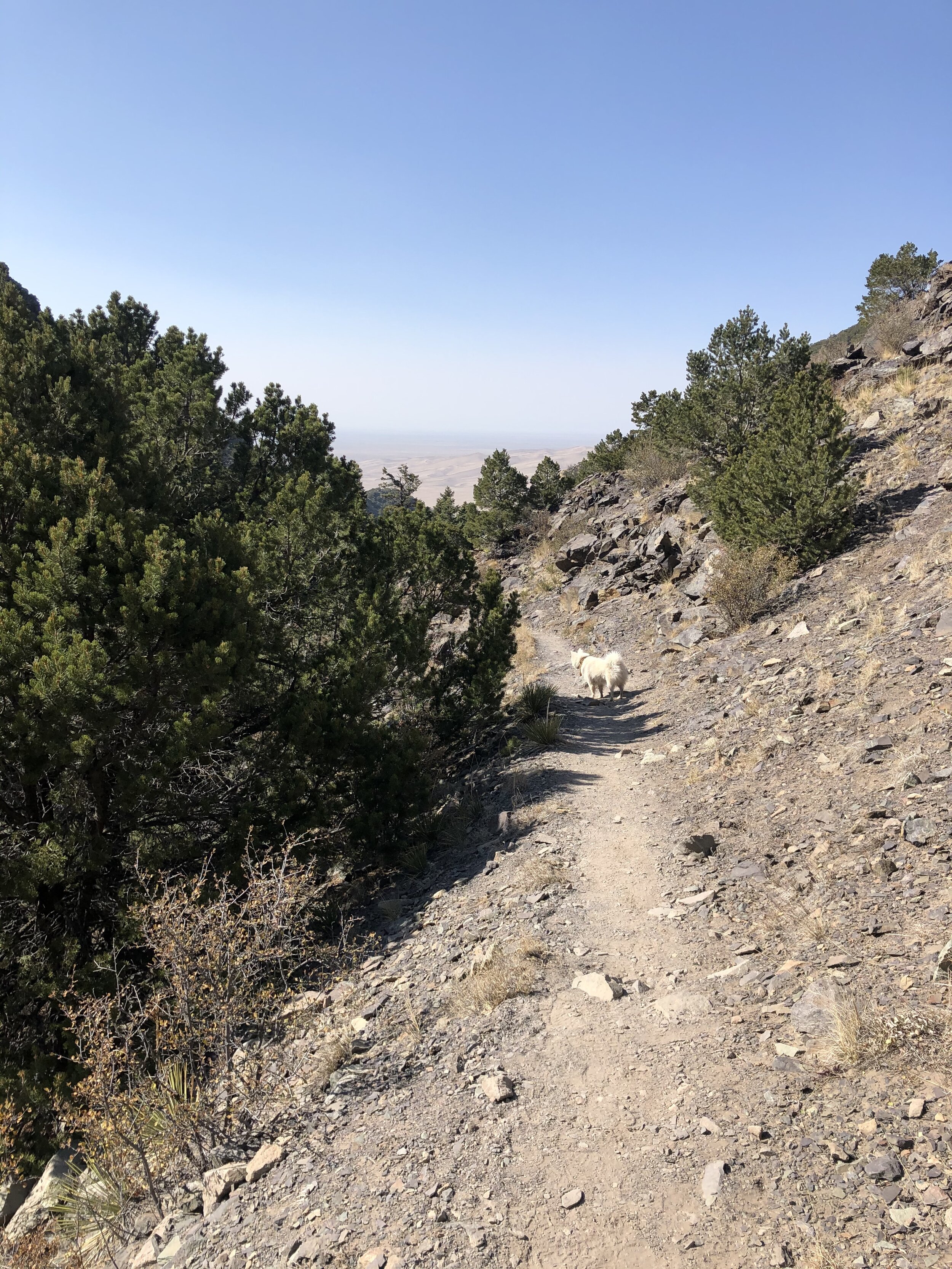
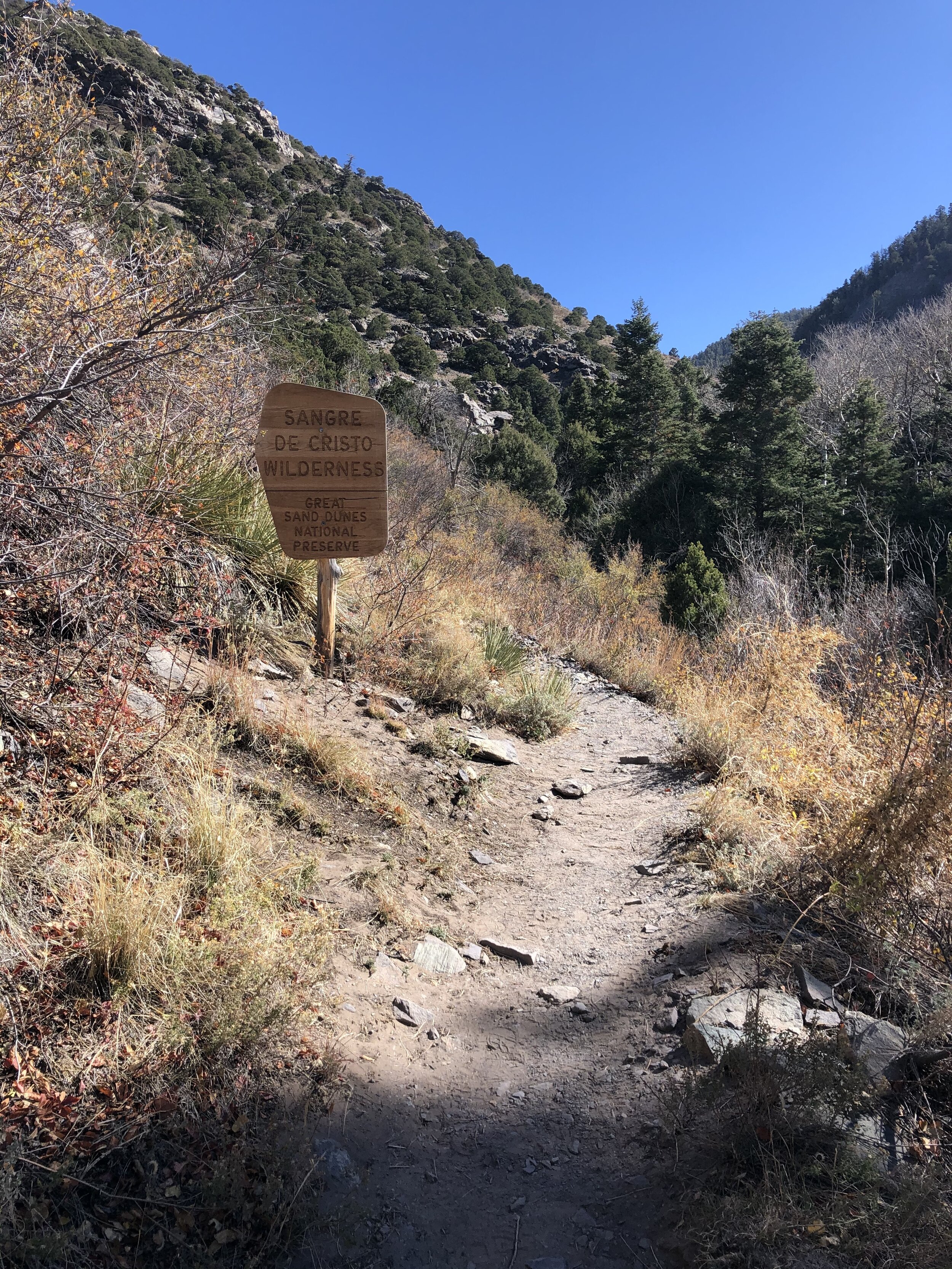
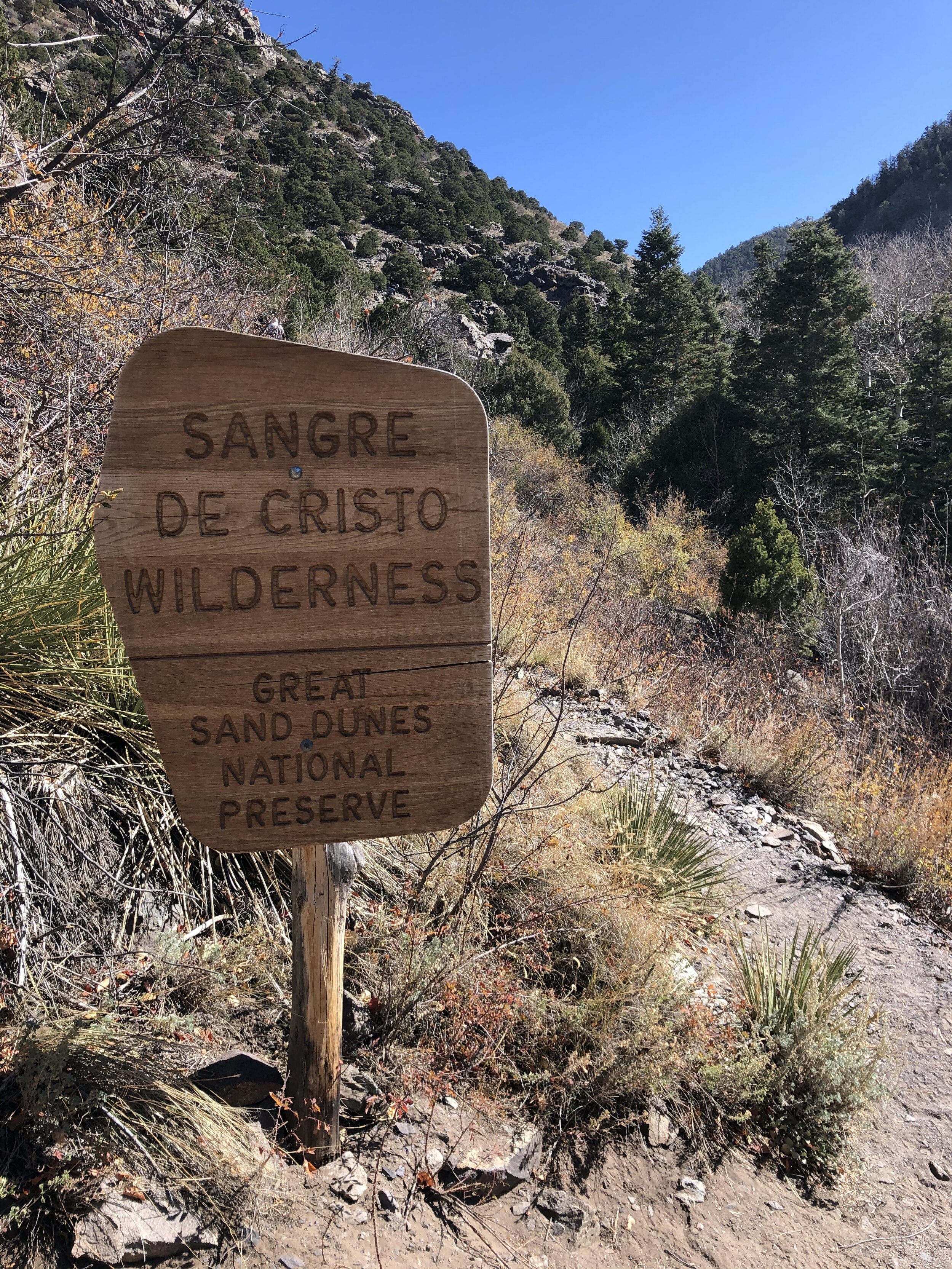
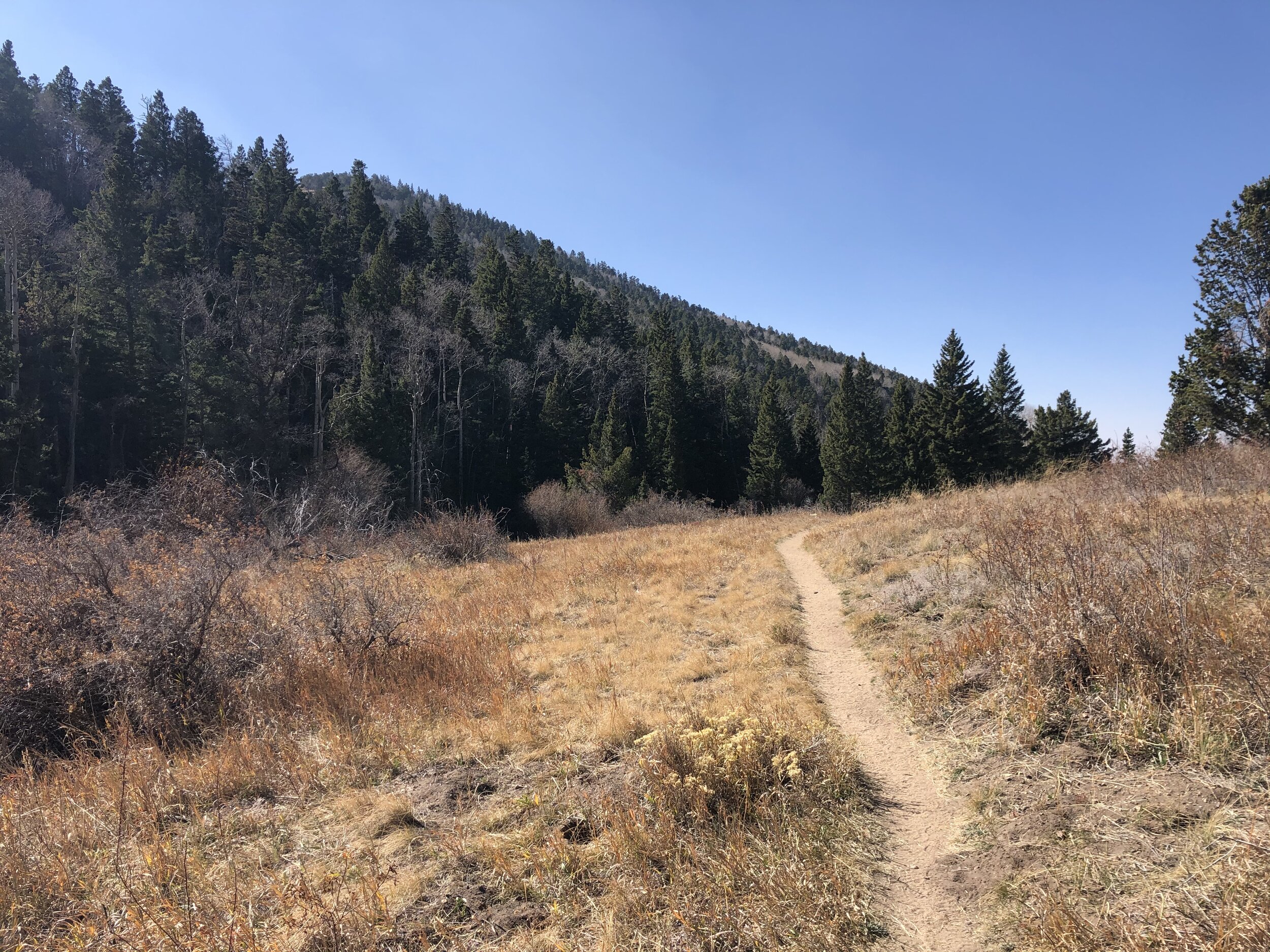
After our hike, we drove to the park entrance for our standard park sign photo. We also caught some glimpses of the late afternoon over the dunes.
Back to the campsite, it was. There, we stumbled upon a stellar sunset.

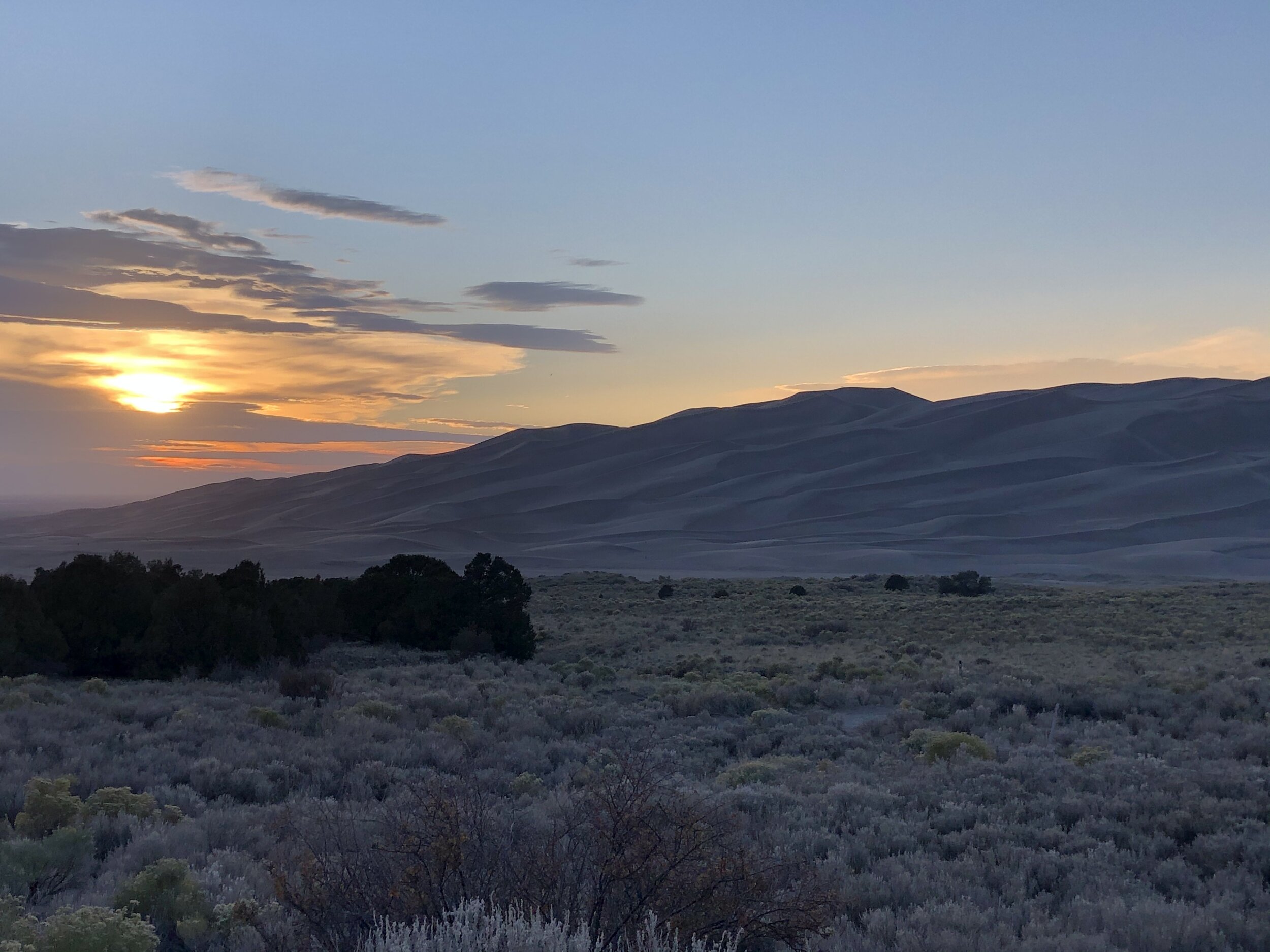
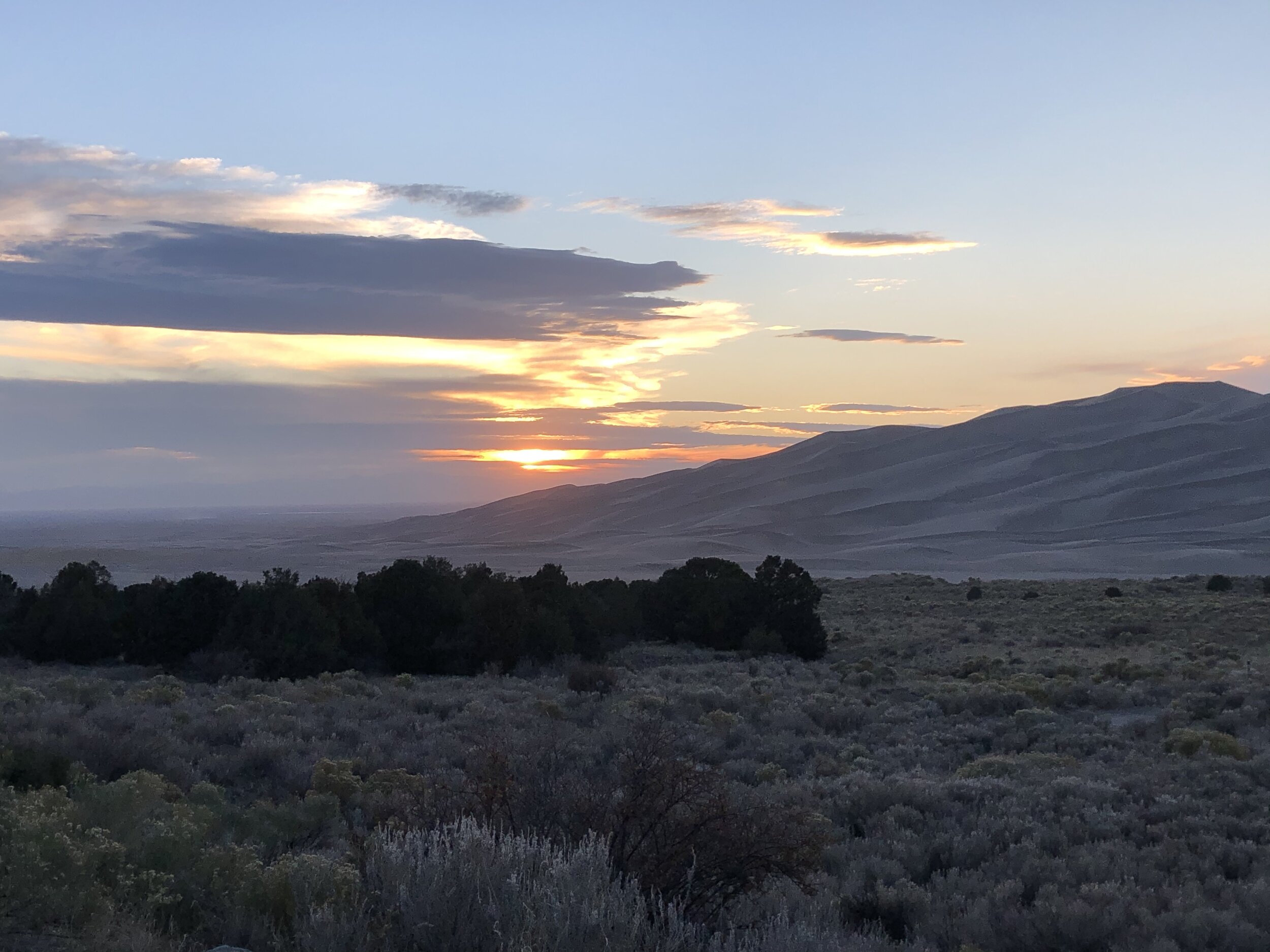
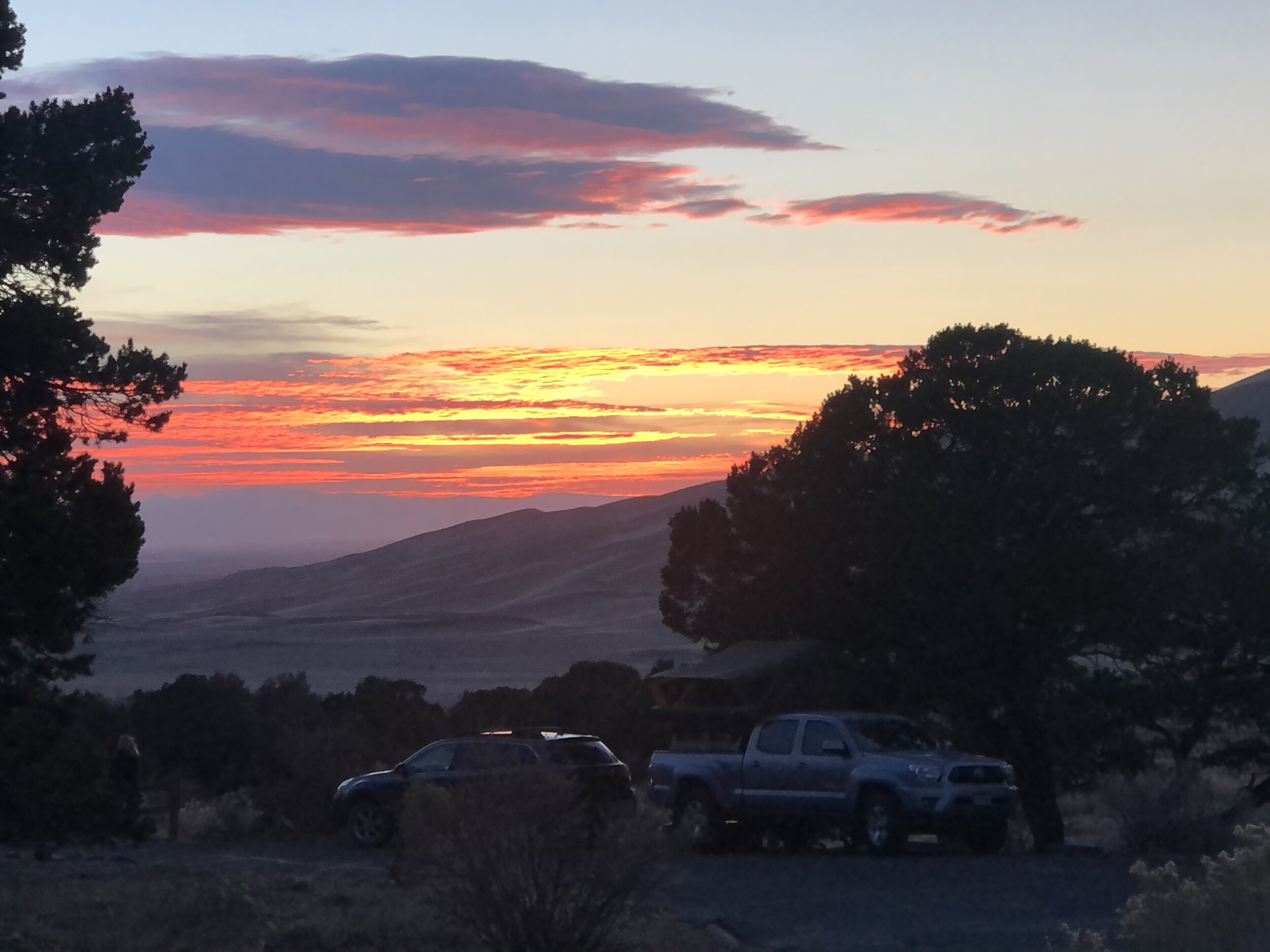
Mesa Verde National Park
Mesa Verde is another 3.5 hours west of Great Sand Dunes. I had never driven through this part of Colorado; it’s not as picturesque as the drive along I-70 (through Vail, Breckenridge, Golden, etc.), that’s for sure.
It was frigid. Very, very cold. I’m not sure if it was the low temps or the off season, but as I got closer to Mesa Verde, it seemed like fewer and fewer people were out and about. I was used to areas around the parks bustling with tourists and businesses, and this was the complete opposite.
I found an RV park right outside the Mesa Verde entrance, Ancient Cedars. Not only was the one campground inside the park closed for the season, but also, there were no hook-ups. Given these freezing temperatures, I wanted the option of keeping the heat and water heater on, even while I wasn’t in the trailer. I didn’t need any pipes freezing.
Addie and I drove into the park before the sun went down, picking up a map at the (closed) visitor center.
We set out early the following day. I spoke to the ranger at the entrance gate, and she advised me on what was open, what was closed, and what I needed to check out. This park was a lot of history, and I was ready to learn.
Mesa Verde is a park that has preserved a lot of history, specifically the history of the Ancestral Pueblo people. The park includes 4,500 archeological sites. The open area that I visited, Chapin Mesa, features dwellings of ancestors from about 550 AD to about 1200 when they left the vicinity and relocated elsewhere.
Pit houses were the first types of homes built and used from 550 to 750 AD. Addie seems really interested in this stuff (first photo, bottom).






Around 750 AD, people began building houses above ground, with mud and poles—underground kivas, which served as social areas for religious, social, and utilitarian purposes, were positioned right outside the houses.
As time went on, architecture advanced to stone masonry. Living spaces were as high as two or three stores and adjoined to neighbors.
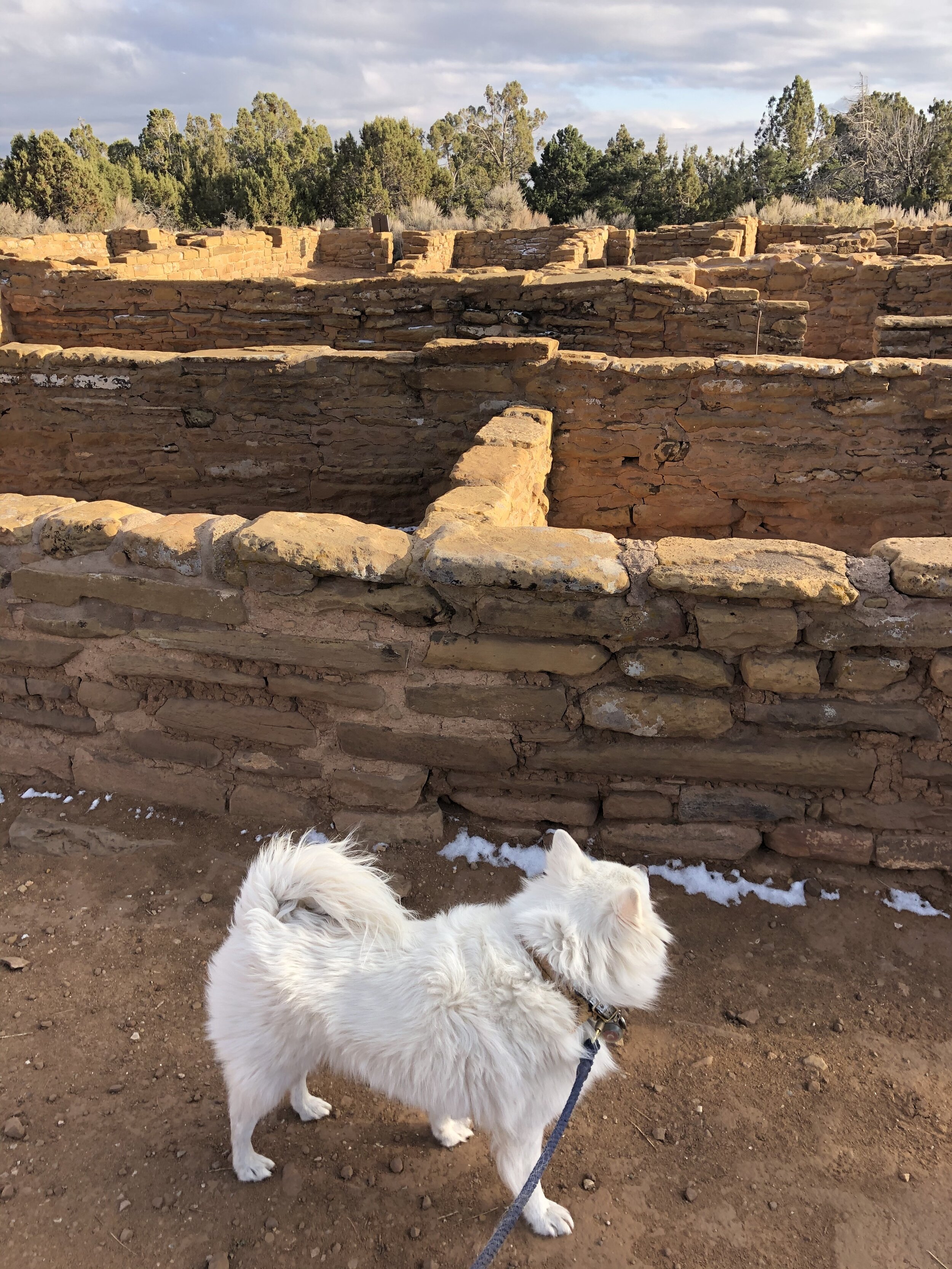

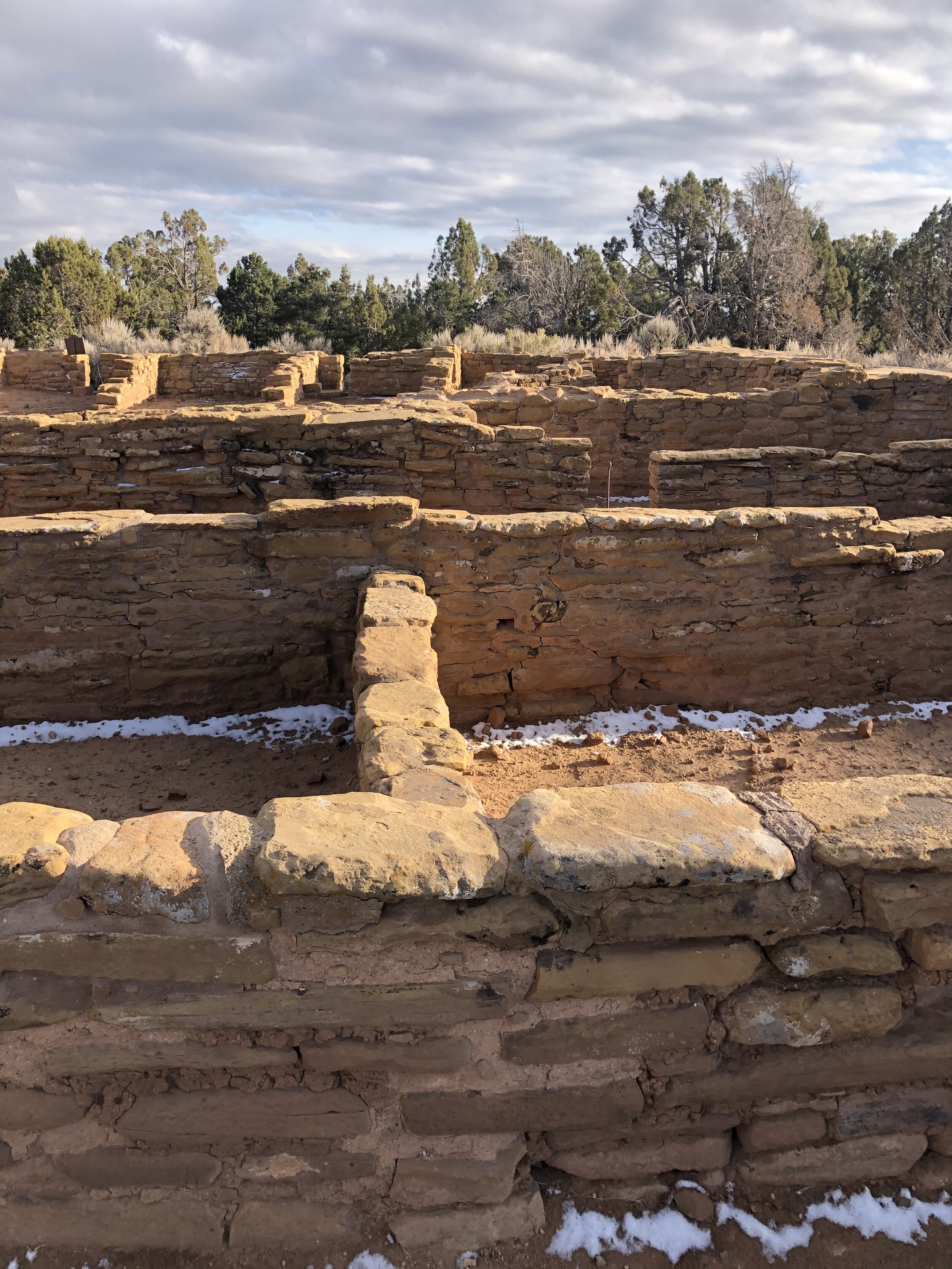


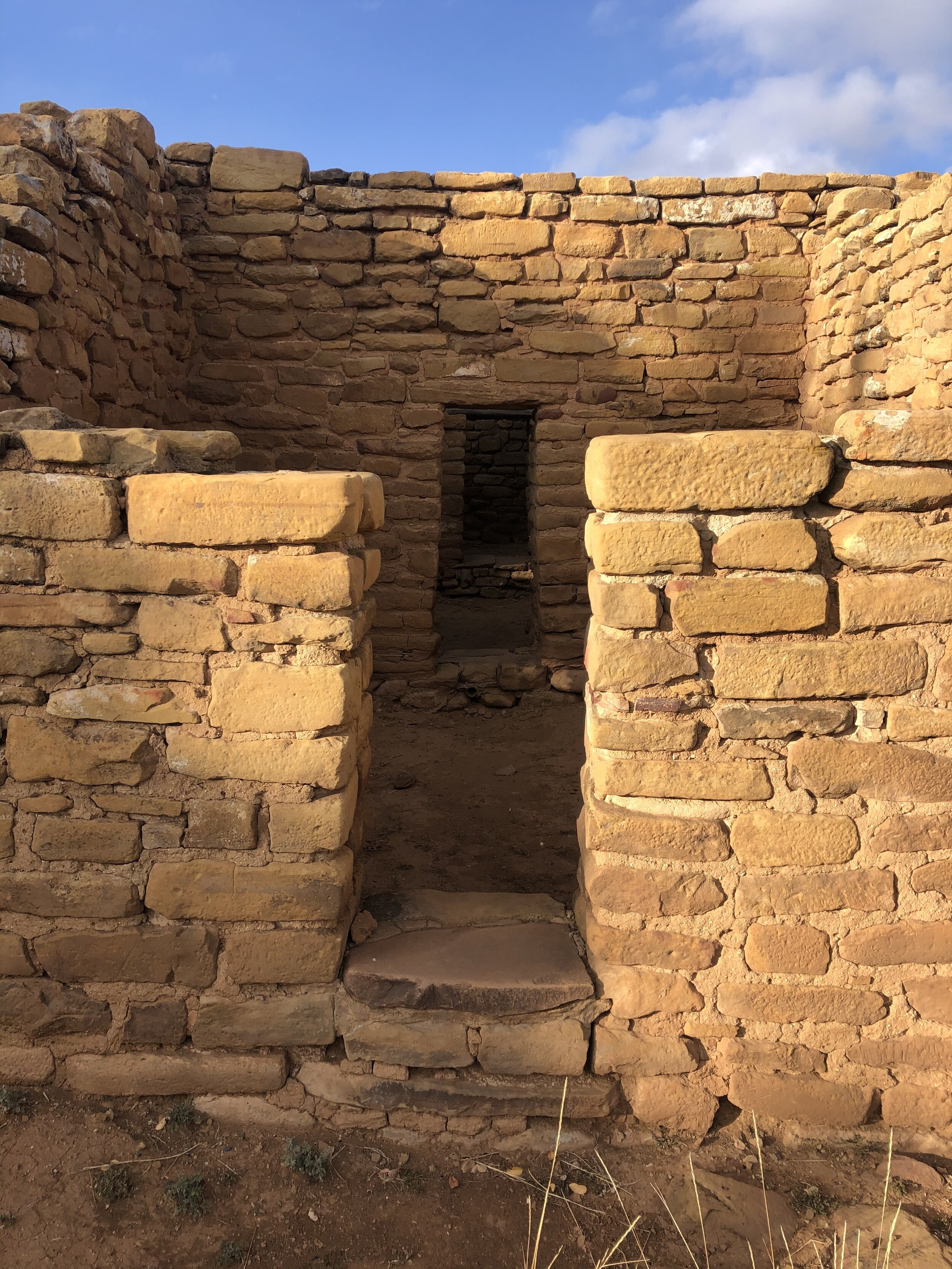
From about the 1190s to the late 1270s, homesteads evolved to cliff dwellings. Archeologists are not exactly sure why this move took place, but they speculate it could have been for enemy defense, natural elements protection, or religious purposes.
These cliff dwellings are so fascinating. It amazed me to see how well they are made and preserved.



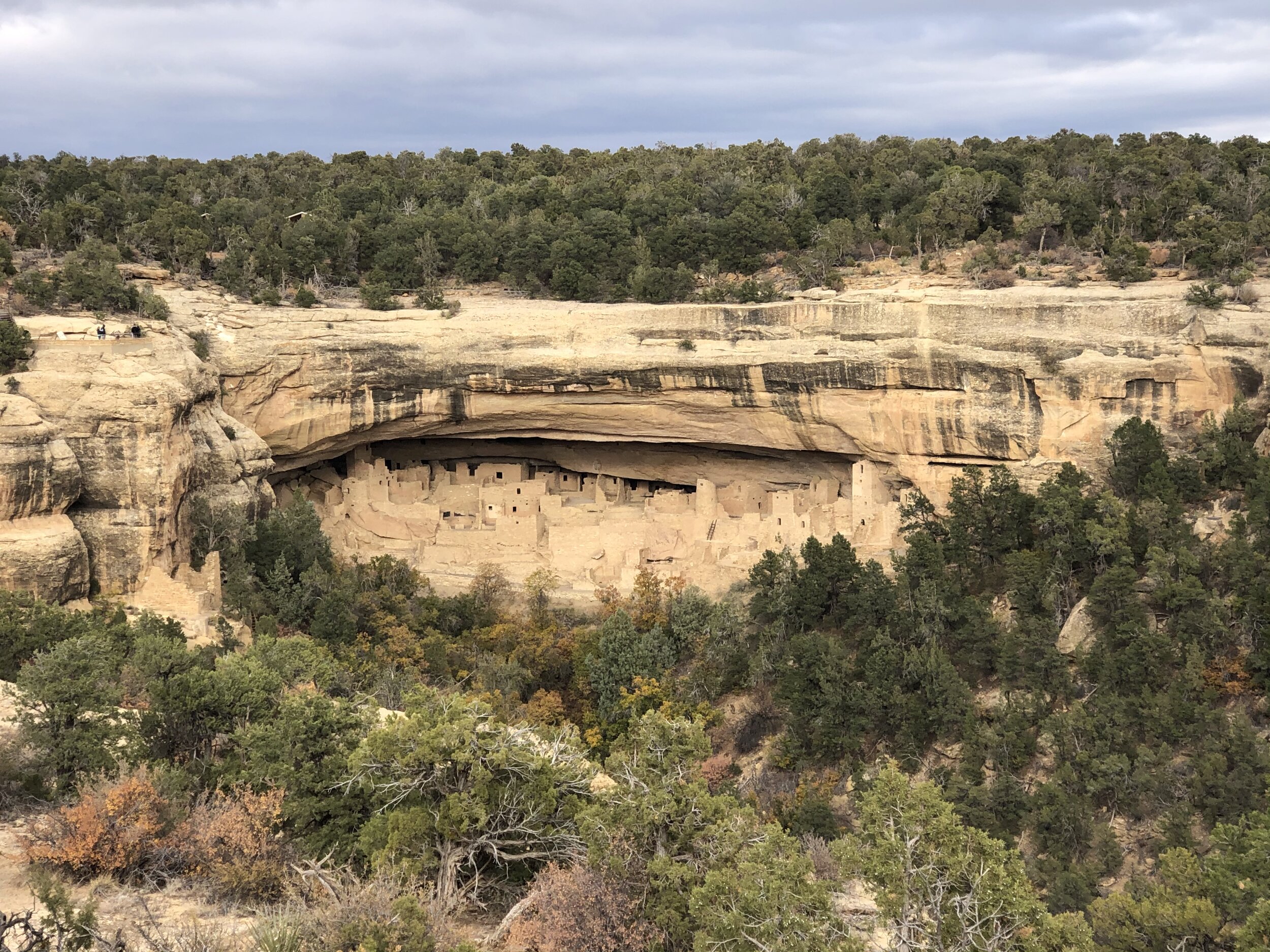
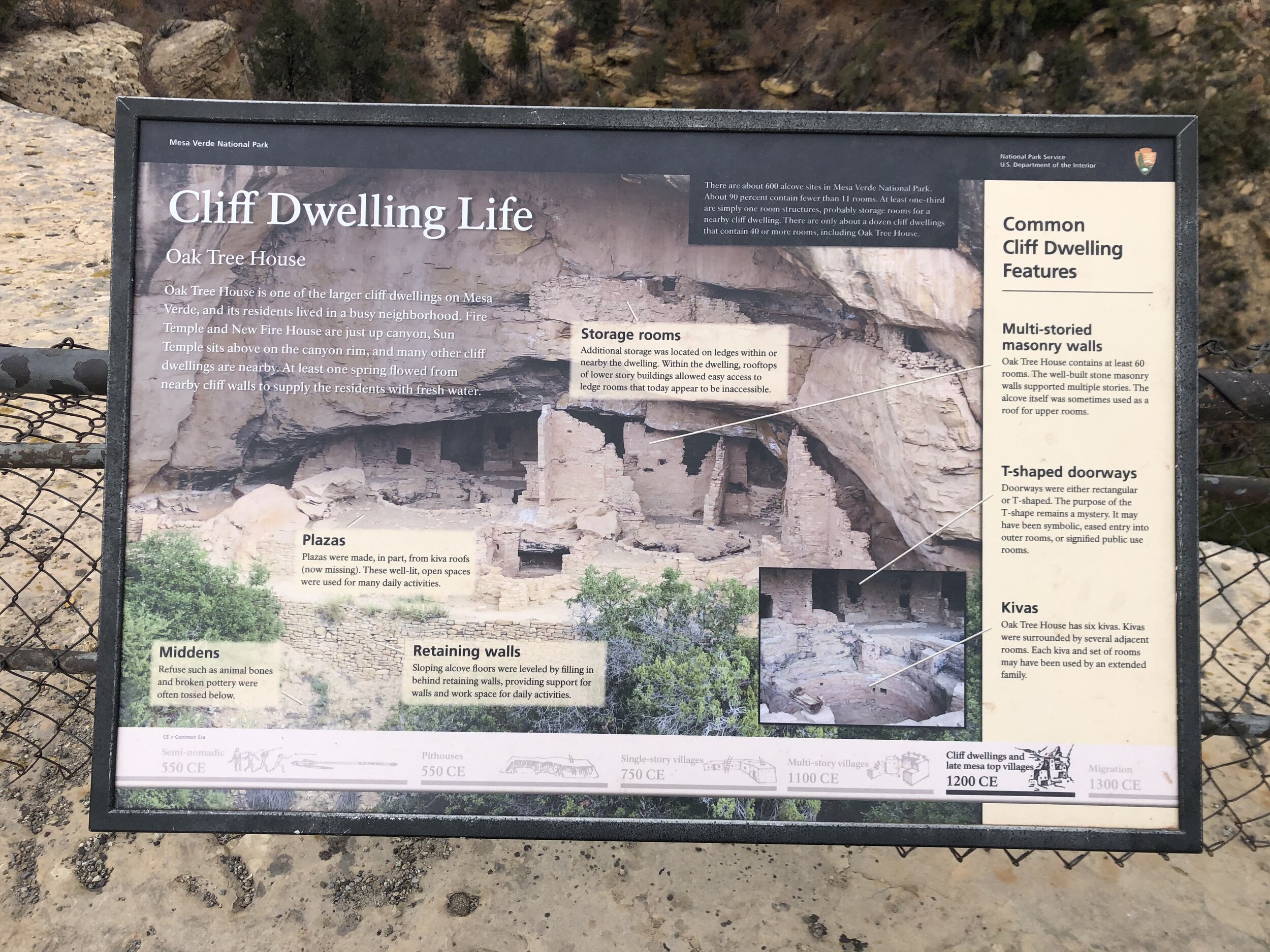
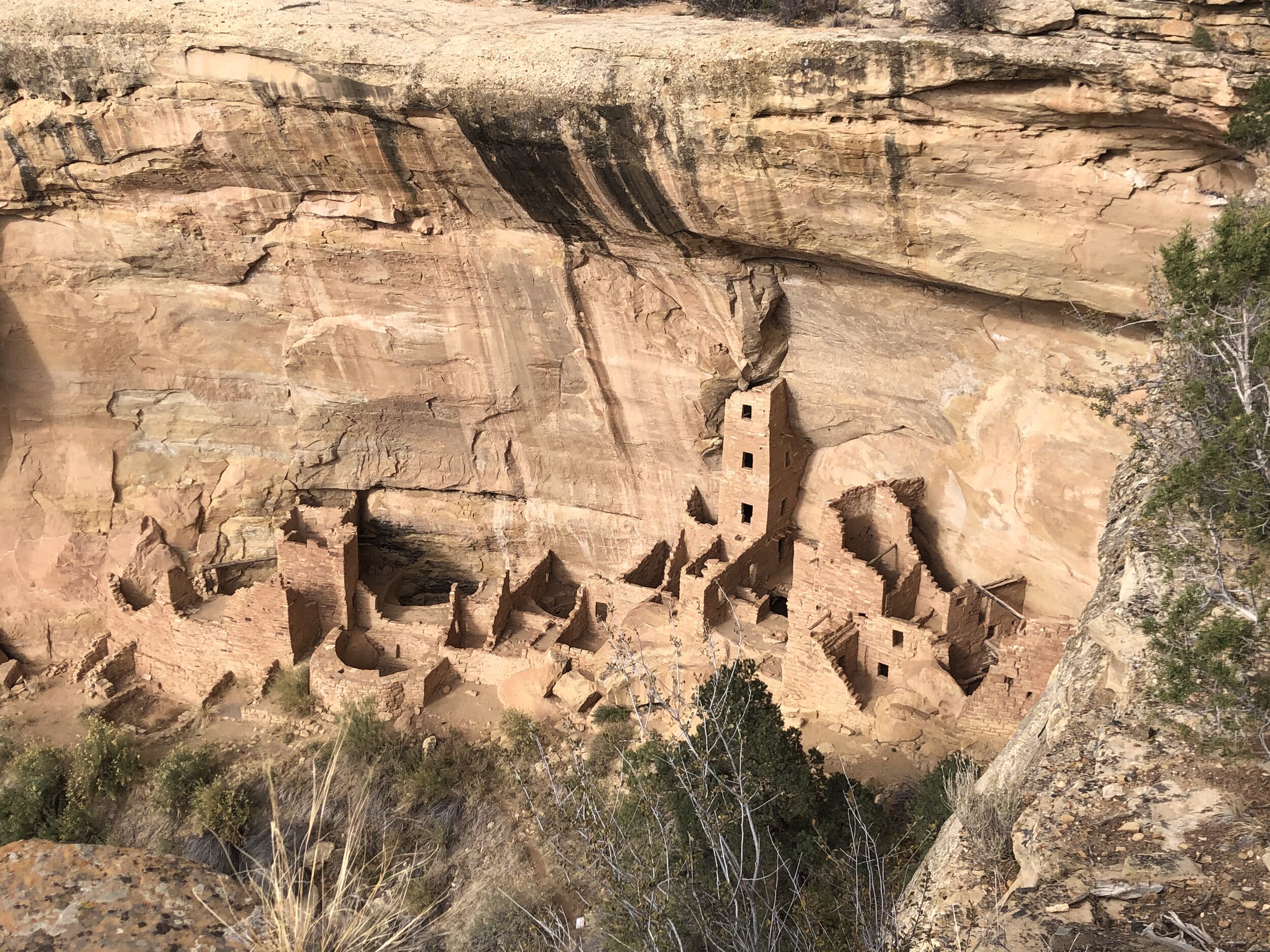
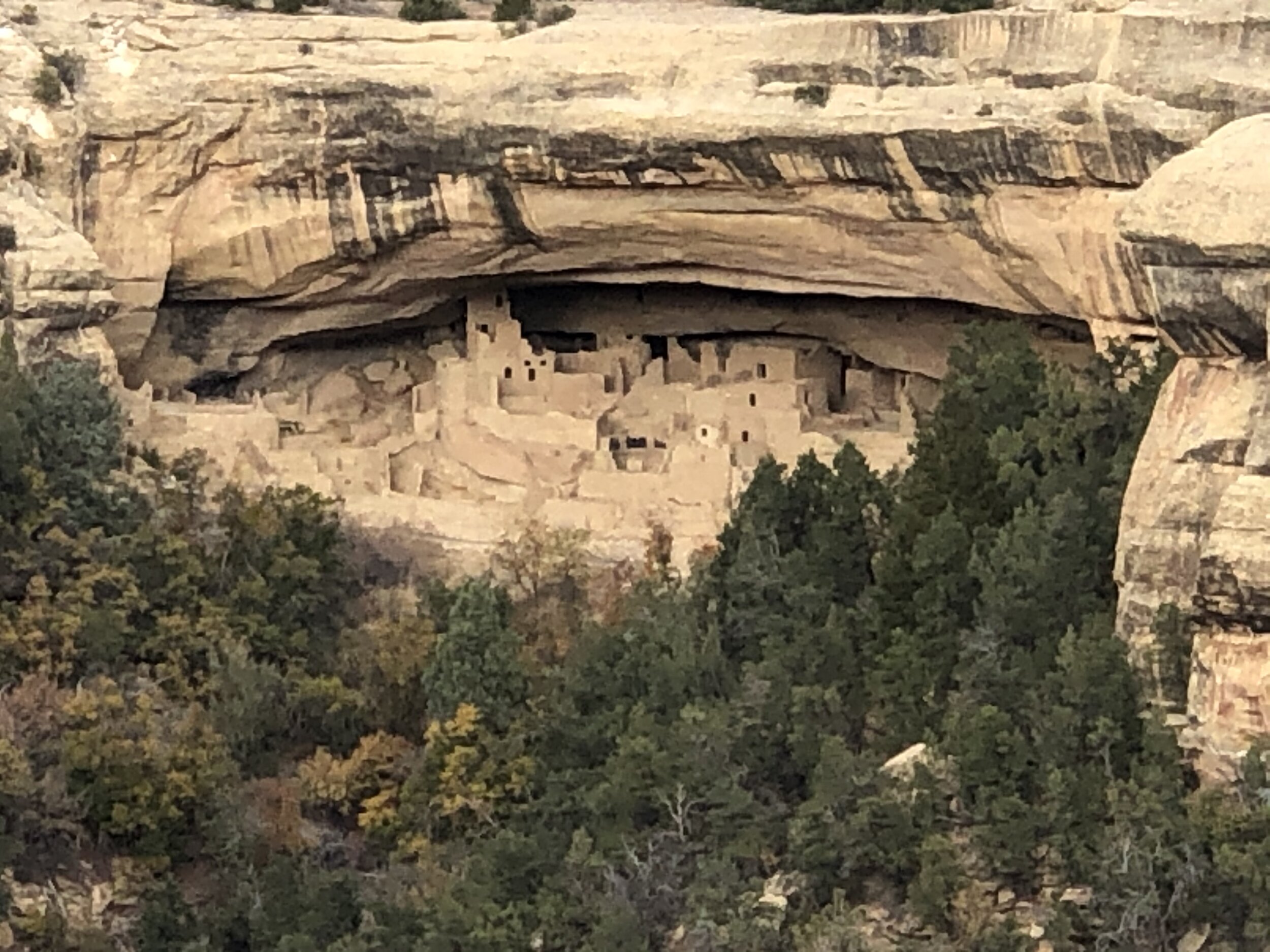
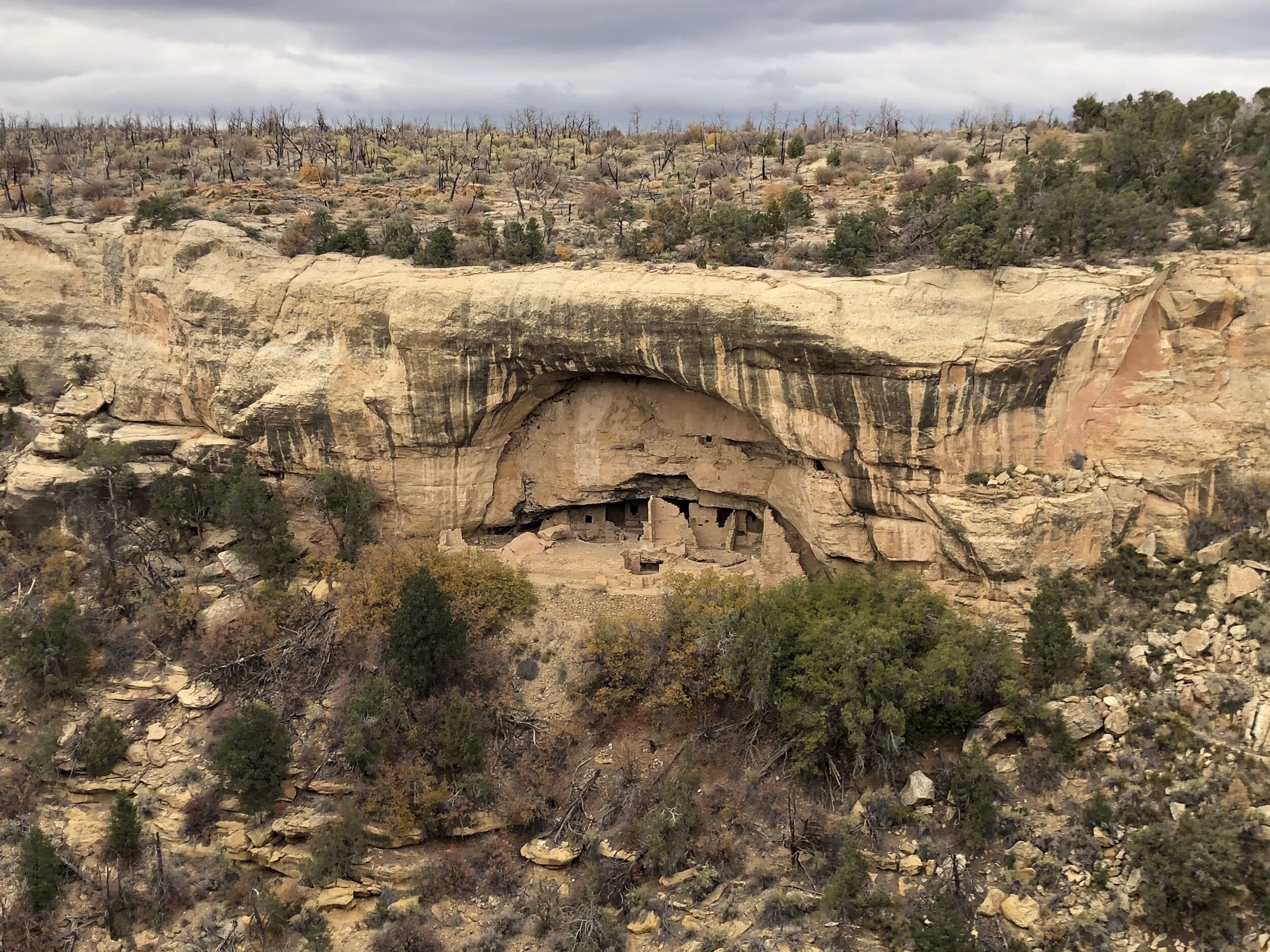
I picked an excellent park not to hike because I wouldn’t have lasted the cold. At the height of the day, it was only about 15 degrees. I was so happy to have a campsite with electricity, as I could turn the heat on as high as I wanted, for as long as I wanted without risking running out of battery.
Returning to Utah was next. I skipped over Moab, Arches National Park, and Canyonlands National Park the last time I was in Utah because I wanted to get to Colorado for the foliage - and before it got too cold in the high elevation. I made the right decision because I wouldn’t have wanted to be at a high altitude during this cold spell I was enduring.


